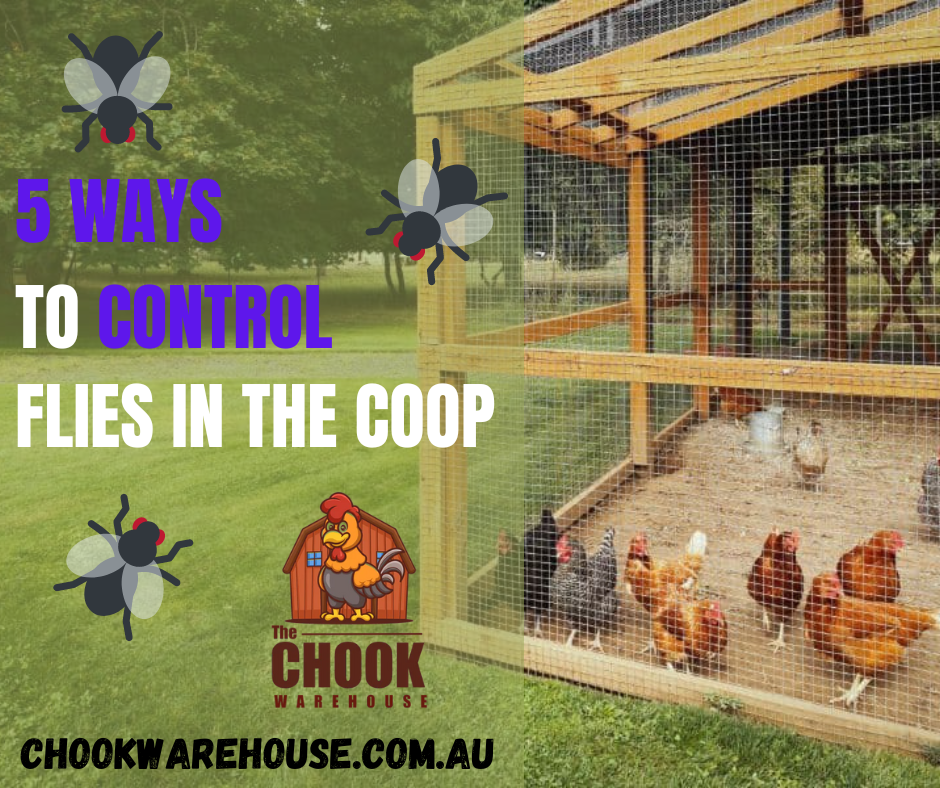
Top 5 ways to reduce flies around the coop
Share
Keeping chickens often means dealing with flies. Here are five effective solutions to reduce their buzzing presence.
Maintaining a low fly population hinges on effective coop management, along with the use of traps or other control methods.
1. Maintain cleanliness and dry conditions.
Flies flourish in warm and damp environments, making manure and wet bedding attractive to them. Studies conducted on commercial poultry farms indicate that maintaining a dry and clean poultry house correlates with a reduced fly population.
To achieve this, keep the litter dry by consistently removing wet bedding and adding fresh wood chips daily, if feasible. If the scale of your flock makes daily maintenance challenging, cover soiled areas with a substantial layer of wood chips to expedite drying. Promptly remove any broken eggs or deceased items to discourage fly attraction.

Promptly clean up any food spillages. If you're feeding scraps, provide only what your birds can consume at once or cover it with wood chips or bark.
Ensure spilled water areas are dried out. If spills are frequent, consider switching to secured drinkers attached to the roof or wall. Options include raised drinkers, hanging bucket drinkers, cage or wall-mounted drinkers, nipple drinkers, and mini cups.
Regularly inspect and fix any leaks in water pipes or taps. Tip: in the case of summer downpours, fill in any puddles that form, as flies tend to lay eggs near or beside water sources.
2. Ensure continuous air circulation.
Adequate airflow plays a crucial role in maintaining a lower and drier interior temperature in the coop, preventing the lingering of flies and other pest insects. Insects like flies and mosquitoes expend considerable energy when flying and tend to avoid areas with moving air due to the increased energy consumption.
If possible, keep doors, windows, or vents in the coop open during the day. Position them on opposite walls, with one facing the prevailing wind and another opposite it to create a cross-ventilation effect, preventing air from swirling inside the coop.
In cases of severe infestation, you may opt for a temporary solution like using a portable fan. If you choose this option, avoid leaving it running unattended, and be sure to clean it regularly, as a buildup of fine dust can become highly flammable if an electrical fault occurs.
3. Employ fly traps.
A variety of reusable fly traps are readily available. Depending on the severity of the fly issue, these traps typically last a few weeks before requiring cleaning and bait replacement. You can find traps and baits from various online retailers as well as in hardware stores.
Opting for reusable traps with replaceable lures is not only more economical but also less wasteful than purchasing one-off traps.
The most effective traps often emit strong odors, making them suitable for use away from your home. Position these traps near areas that attract flies, such as compost heaps and your coop.
Hang the traps on the sheltered side of the coop, where more flies are likely to gather away from the wind.
4. Utilize sticky fly paper.
Hanging strips of fly-covered paper may not be aesthetically pleasing, but they prove effective when used in conjunction with other methods. Once the paper is covered with flies or dust, it's advisable to replace it.
5. Employ electric zappers.
Electric zappers utilize ultraviolet light to attract flies and then electrocute them when they approach. Machines for both indoor and outdoor use are available, with smaller ones covering areas ranging from 50m² (approximately the size of two double car garages) to 150m².
Have any suggestions? I'd love to hear them! please leave a comment below!


